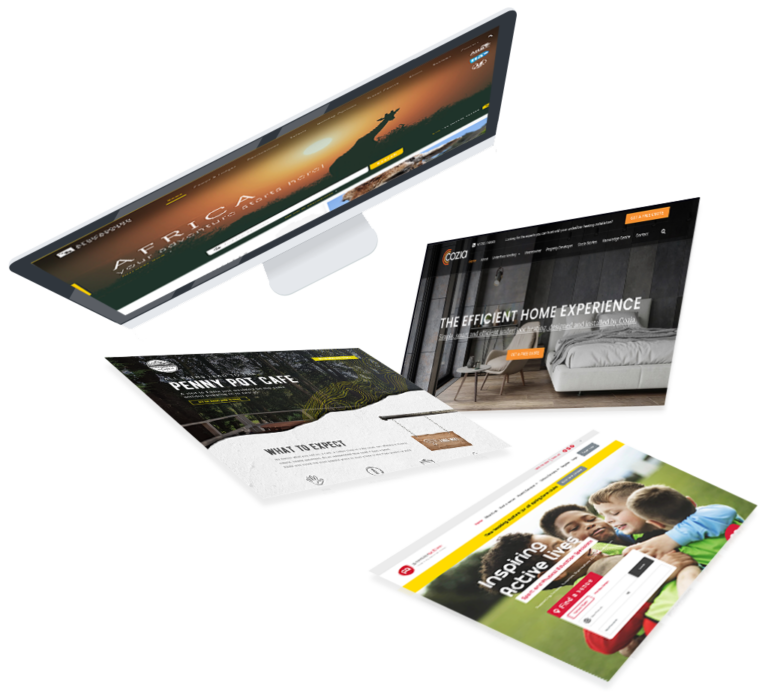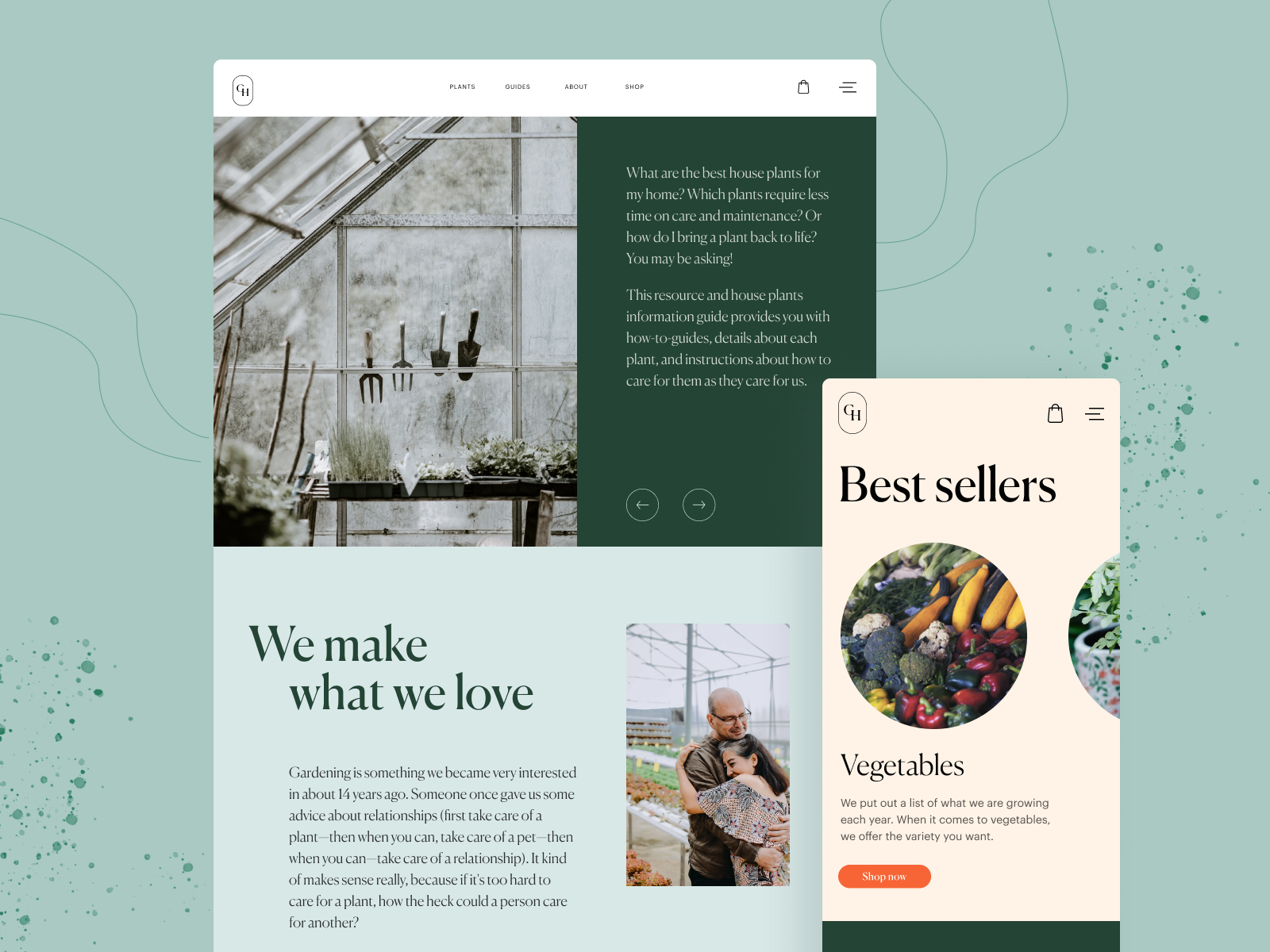How Website Design Can Improve Conversion Rates and Sales
How Website Design Can Improve Conversion Rates and Sales
Blog Article
The Ultimate Overview to Modern Website Layout Trends
In the ever-evolving electronic landscape, modern site design fads play a vital duty in forming customer experience and involvement. From the increase of minimalist layout principles that focus on simplicity to the effect of vibrant typography in defining brand name identification, each component contributes to a natural on the internet presence. The emphasis on responsive and mobile-first approaches, together with cutting-edge microinteractions, better boosts use. The growing focus on sustainable web style techniques shows a dedication to ecological responsibility. These trends jointly increase essential concerns regarding the future of effective website design and what it implies for consumers and services alike.
Minimalist Design Concepts
Minimalist design principles stress the concept that much less is much more, supporting for simplicity and performance in visual communication. This method remove unneeded aspects, concentrating rather on necessary parts that convey the intended message successfully. By prioritizing quality, minimal design boosts user experience, permitting site visitors to browse web sites effortlessly.
Core tenets of minimal layout include the use of sufficient white area, which produces a feeling of equilibrium and organization. This adverse space not just directs the viewer's attention to key aspects yet likewise promotes a soothing aesthetic ambience. In addition, a limited shade combination is frequently utilized, utilizing single systems or soft colors to maintain aesthetic cohesion and avoid overwhelming the individual.
Typography plays an essential role in minimal design, where understandable typefaces are picked for their simplicity and effectiveness in communicating content. Graphics and images are conserved, guaranteeing that they serve a purpose instead of sidetrack from the overall message. Inevitably, minimalist design principles cultivate a concentrated environment that motivates users to involve with the content, boosting the general performance of modern internet site style. This fad shows an expanding appreciation for thoughtful, user-centric aesthetic appeals in digital spaces.
Vibrant Typography Options
Accepting bold typography options has actually ended up being a defining quality of contemporary web site design, as it successfully catches attention and conveys strong messaging. Developers are increasingly using typography not merely as a useful element but as a crucial visual component that improves the general aesthetic and user experience.

Additionally, the juxtaposition of vibrant typography with minimal design principles permits for striking contrasts, boosting readability while preserving aesthetic allure. Using whitespace around strong text even more highlights its importance, guaranteeing that the message reverberates with the audience.
As digital landscapes come to be much more competitive, leveraging bold typography enables brands to differentiate themselves and leave a long-term impression. The mindful choice of font styles and their application can stimulate emotions, establish tone, and drive action, making strong typography a vital tool in modern web site layout. Eventually, it is a powerful method to boost narration and ensure that vital messages are not only seen however also really felt.
Responsive and Mobile-first Design
Mobile-first and responsive design has actually become a crucial concept in modern-day site growth, showing the increasing dependence on mobile phones for accessing online material. As customer habits shifts towards mobile surfing, designers should focus on producing experiences that adjust perfectly throughout numerous screen dimensions and resolutions.
A receptive layout ensures that a website automatically changes its layout, images, and capability based on the gadget being utilized. Mobile-first design advocates for creating websites click here to find out more at first for smaller sized displays, ultimately scaling up to bigger display screens.
Implementing responsive and mobile-first principles not just satisfies customer choices however likewise content aligns with seo (SEO) methods. Significant internet search engine, like Google, prioritize mobile-friendly sites in their positions, making it vital for companies to adopt these layout techniques. In a competitive electronic landscape, accepting receptive and mobile-first layout is not simply an alternative; it is important for making sure ease of access and engagement with a varied audience.
Engaging Microinteractions
Microinteractions play a pivotal function in improving customer engagement and total website experience, specifically in the context of responsive and mobile-first style. These subtle design aspects offer prompt comments to individuals, making interactions a lot more enjoyable and intuitive. Examples consist of button computer animations, notification signals, and filling signs, which not only overview individuals but also create a feeling of link with the interface.
Including appealing microinteractions can dramatically enhance functionality by lowering cognitive tons. When customers obtain auditory or aesthetic feedback upon performing activities, such as clicking a switch or submitting a type, they feel more certain in their selections. This fosters a smoother navigating experience, eventually raising individual retention.

As web site design patterns continue to advance, the significance of microinteractions can not be overemphasized. They work as the subtle yet effective touchpoints that transform common communications right into remarkable experiences, thus boosting the overall effectiveness of modern-day website design.
Sustainable Web Style Practices
Lasting web style methods are becoming significantly crucial as the digital landscape expands and environmental worries rise. Designers and developers are acknowledging their obligation to produce websites that not only offer customer demands but also minimize ecological impact. This method incorporates a number of essential strategies.
To start with, enhancing power usage is critical. Websites should be created to load swiftly and effectively, which reduces server power use and enhances customer experience. Techniques such as image compression, lessening HTTP requests, and making use of modern coding methods contribute considerably to this objective.
Second of all, selecting green holding suppliers is essential - website design. Lots of hosting firms are currently powered by renewable resource resources, allowing websites to run in a more sustainable manner. This selection reflects a dedication to reducing carbon impacts
Additionally, embracing a minimalist design can improve sustainability. Less elements on a web page cause much less data transfer, which not just accelerates filling times but also preserves resources.
Finally, advertising digital access guarantees that websites reach a broader target market without unneeded bloat, lining up individual experience with ecological duty. By incorporating these lasting practices, internet developers can add favorably to both customer interaction and the earth's health.
Final Thought
In summary, modern site layout patterns highlight the integration of minimal concepts, bold typography, and responsive style to enhance user experience. Embracing these fads is crucial for producing impactful digital experiences that resonate with customers in a progressively affordable on-line landscape.
In the ever-evolving digital landscape, modern web site design fads play an important function in shaping individual experience and interaction. By focusing on clarity, minimal design improves user experience, enabling visitors to navigate web sites effortlessly.
Inevitably, minimal style concepts cultivate a focused setting that encourages individuals to engage with the web content, enhancing the overall effectiveness of contemporary site style.Microinteractions play a pivotal function in boosting customer involvement and overall web site experience, specifically in the context of responsive and mobile-first layout.In recap, contemporary internet site style patterns stress the integration of minimalist principles, you could try this out strong typography, and receptive style to enhance individual experience.
Report this page